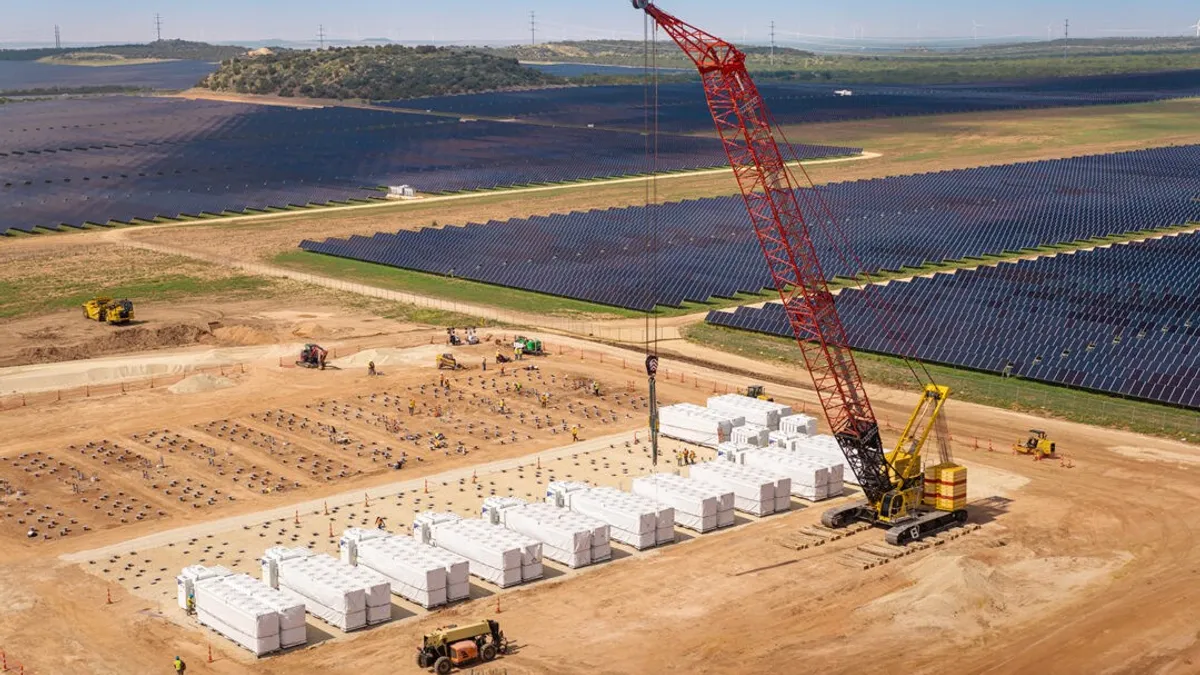National Grid USA and Constellation Energy floated proposals for prioritizing interconnection requests to get generation and energy storage online faster during a panel discussion at a Federal Energy Regulatory Commission workshop on Tuesday.
FERC last year issued its Order 2023, which included a requirement that transmission providers adopt a first-ready, first-served cluster study process to weed out speculative projects in interconnection queues. The agency’s two-day workshop is exploring potential options for further improvements to the grid interconnection process.
The grid interconnection backlog in the United States grew 30% last year to 2.6 TW, according to Lawrence Berkeley National Laboratory. As generating and energy storage projects wait for interconnection studies to be completed, the North American Electric Reliability Corp. has been warning about potential power supply shortfalls in many parts of the continent.
“With reliability as the overriding goal of interconnection, that means prioritizing those generation resources that can be built quickly and efficiently, and that give us the most generation capacity as quickly as possible at the least burden to customers,” FERC Commissioner Mark Christie said Wednesday.
An option debated during the workshop’s first day was the possibility of further prioritizing interconnection requests to increase queue efficiency.
Instead of tweaking existing interconnection rules, a new process should be adopted to help get generating resources online, according to Mike Calviou, National Grid’s senior vice president of U.S. policy and regulation.
Under the proposal, transmission providers would set up a capped “priority” queue that would run alongside an overall interconnection queue and would be accessed through a solicitation process, Calviou said. Projects would be scored on a set of reliability/system needs, cost and policy criteria “consistent with open access principles,” he said in prepared comments.
The proposal also includes a cost allocation process for sharing the cost of network upgrades between generation and load. It calls for coordinating long-term transmission planning with the interconnection process.
Separately, Constellation proposed an “expedited reliability process” that prioritizes interconnection requests based on enhanced criteria for determining project readiness if there is a near-term reliability or resource adequacy need that can be addressed by some projects more effectively and quicker than others, Adrien Ford, wholesale market development director for Constellation Energy Generation, said in prepared comments.
The process would need “gating criteria” to keep it narrowly focused, she said at the workshop.
The PJM Interconnection is considering proposing a separate queue process for shovel-ready projects to run in parallel with ongoing interconnection studies to support resources adequacy, Ford noted.
However, “rationing” interconnection capacity would compromise a primary FERC goal of ensuring open access to the electric grid, said Jason Burwen, vice president of policy and strategy for GridStor, a battery storage developer.
Any rationing mechanism should be as limited as possible and should center on allowing interconnection customers to make decisions instead of leaving transmission providers with decision-making power, according to Burwen.
“Prioritizing interconnection requests using willingness-to-pay mechanisms best satisfies these limiting principles,” he said in a prepared statement. The Southwest Power Pool’s “entry fee” approach is an option, he said.
Replacement generation for retiring power plants should have a priority in interconnection queues, according to Joshua Burkholder, managing director of integrated resource planning for American Electric Power.
On-site generation replacement takes advantage of already existing interconnection facilities and should be studied under fast-track reviews like it is by SPP and the Midcontinent Independent System Operator, he said.
Under PJM’s transition to a new interconnection process, replacement generation — like all new interconnection requests — can’t enter the interconnection queue until early 2026, with study results not expected until 2028, Burkholder said.
But simply transferring interconnection rights to an existing power plant owner could lock in incumbency advantages, keeping new entrants out of the market, Burwen said.























